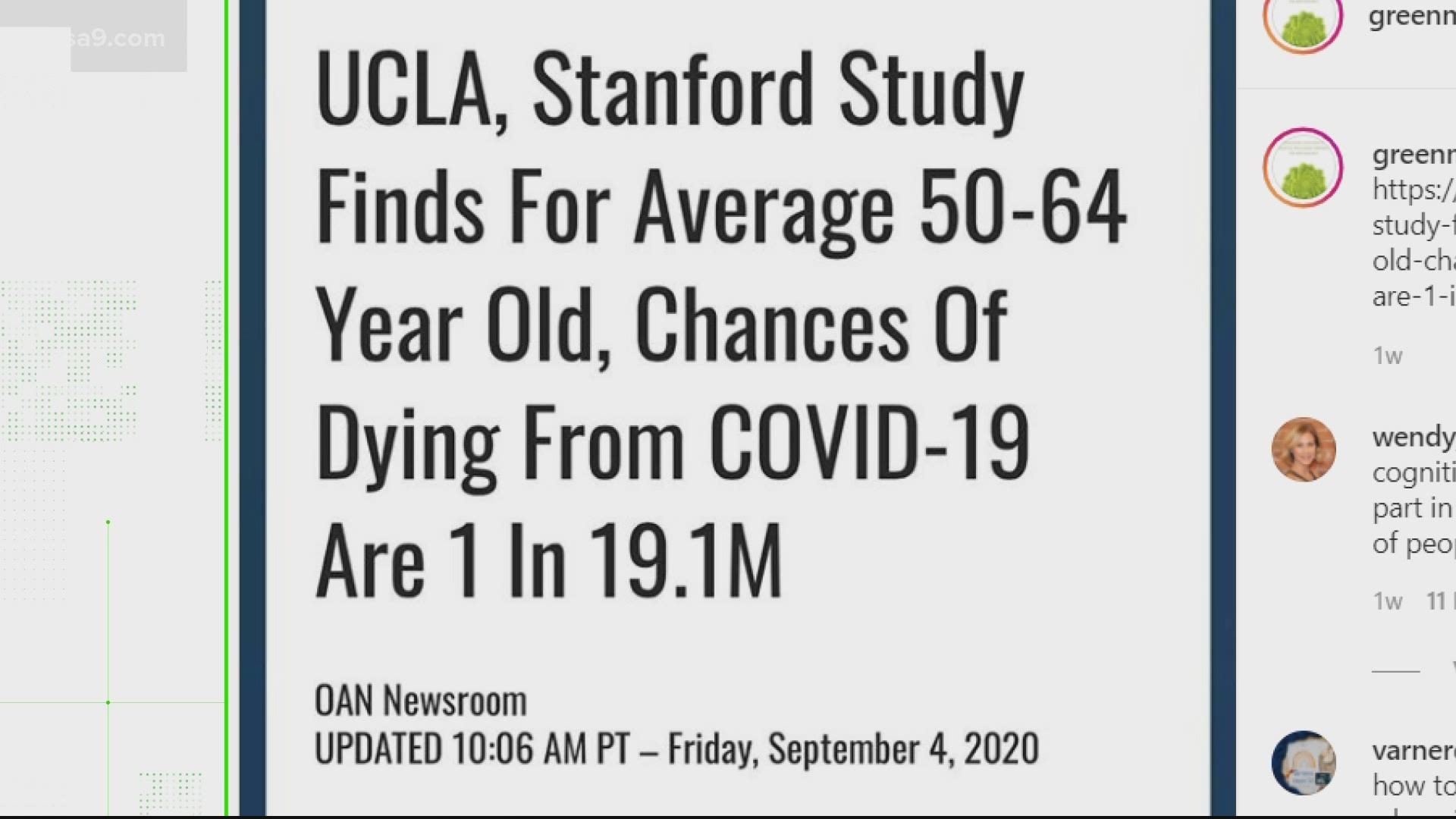WASHINGTON — Researchers and public health officials are learning more about COVID-19 every day. That means a huge number of studies have been published with different hypotheses and conclusions since the beginning of the year.
All too often, those studies are misrepresented. That's why the Verify team digs in and does the research to find the facts.
QUESTION: Did a UCLA, Stanford study find that the average 50-64-year-old has a 1 in 19.1 million chance of dying from COVID-19?
ANSWER: No. This is a misrepresentation of the study and its findings.
SOURCE: The June UCLA, Stanford study and one of its authors, Dr. Rajiv Bhatia.
PROCESS:
The Verify team received a link to an Instagram post showing the headline, "UCLA, Stanford Study Finds For Average 50-64 Year Old, Chances Of Dying From COVID-19 Are 1 In 19.1M."
We traced that headline back to One America News Network (OAN), a cable news channel announced to the 2013 Conservative Political Action Conference (CPAC) as a platform for conservative voices. In their article, they link to a June study published by two researchers at Stanford and UCLA as their source for that "1 in 19.1 million" statistic.
But upon reading the study, our Verify researchers did not find that statistic anywhere. It is not a conclusion that the study's authors came to.
We reached out to one of the authors, Dr. Rajiv Bhatia. He said in an email that "this is a misrepresentation of the study and findings...The study is under peer review and is being revised."
Dr. Bhatia told us that the study is not meant to be used to calculate the risks of contracting or dying from COVID-19 on a national scale. The study simply presents an alternative method for calculating risk on a county level.
So, what data does the study use?
The study uses data from some large U.S. counties to attempt to calculate the average risk of severe disease after a person comes in unprotected contact with a random person. Unprotected contact in this situation refers to an interaction with a person without a mask, social distancing, or other methods for disease spread prevention.
A section of the discussion in Dr. Bhatia's paper is devoted to pointing out the unknown factors that would need to be taken into account when using this method to conduct an accurate risk analysis. Those factors include contact tracing data, varying immune responses, and the differences between household spread and community spread.
So we're Verifying — the risk of an average 50-64-year-old dying from COVID-19 is NOT 1 in 19.1 million.
The OAN story in question, which has garnered more than 700,000 views on YouTube, goes on to say that the UCLA, Stanford study says "people are vastly overestimating their chances of getting sick and going to the hospital, especially here in the US." The study says nothing of the sort.

